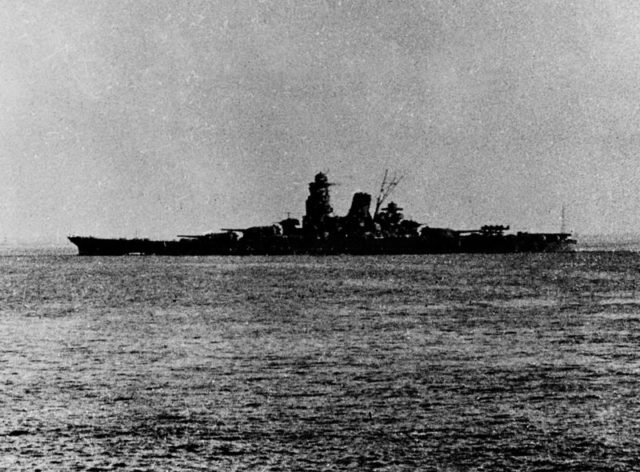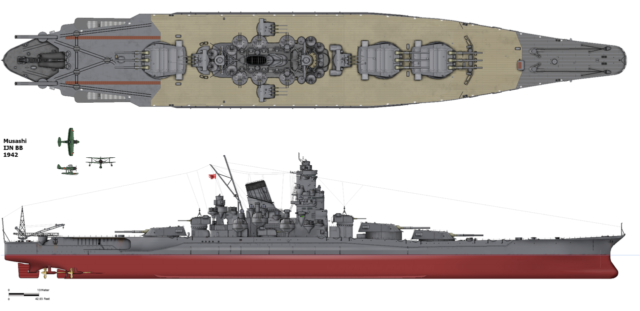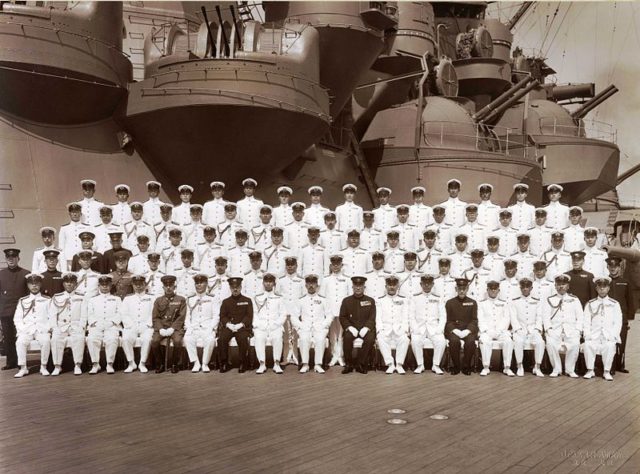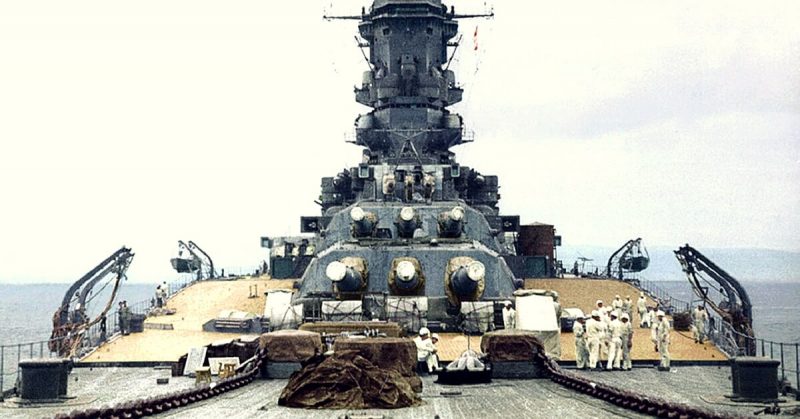It was one of the biggest ships to ever ply the seas and ensure Japan’s conquest of the Asia-Pacific region during WWII. It was so huge, in fact, that it overwhelmed the town that built it.
After WWI, the winners wanted to prevent another war by limiting the size and number of warships built – something called the Washington Naval Treaty. Though ratified in 1923 and recognized by the League of Nations the following year, neither Japan nor Italy were happy with it.
The US was ramping up its navy. Under President Woodrow Wilson, America was adhering to the size limitations that it had helped co-author while building more battleships and battlecruisers.
Japan was still traumatized by the Treaty of Kanagawa made with the US in 1854. Before that trade “agreement,” Japan had been isolationist.
But President Millard Fillmore wasn’t having any of it. This was why he ordered Commodore Matthew C. Perry to take nine ships and three steam frigates to Japan and give them a little convincing. Although Perry didn’t level Tokyo (as the New York Herald had urged), Japan never forgot.
According to Japanese naval doctrine, therefore, it was absolutely necessary to have a fleet of about 70% of what the US had. Yet the treaty compelled them to make do with only 60%! It was obviously an American ploy to keep Japan weak and defenseless!
At the time, Japan had about 55% as many capital ships as the US – something it was working to address. It also had only 18% of America’s GDP. An arms race with such a super power would surely cripple Japan’s economy.

Fortunately for them, America was not yet the superpower that it is today. As such, Japan was able to reject the Washington Treaty without serious consequences. Then they set about defying it.
Only a powerful navy could protect them from American gunboat policy. It would also keep Japan from being just another colony of some European nation.
So they wanted a battleship that would intimidate even the Americans. It had to be big enough to carry no less than eight 18.1-inch guns. It also had to be sufficiently tough to withstand a hit from such guns at a range of between 20,000 and 35,000 meters.
The design competition began in March 1937 and saw 24 different proposals. The winner was Captain Kikuo Fujimoto with Plan No. A-140F6 – but it wasn’t unanimous. The behemoth couldn’t fit through the Panama Canal, but supporters argued that it was not meant for trade.
Fujimoto suggested a wider beam with most of the armoring as close to the center as possible. That left the bow and stern completely unarmored. But no problem – flood control compartments should keep it seaworthy.
His vision was a gigantic fortress measuring 862’ 10” in length, with a beam of 127’ 7’ and a draught of 34’ 1”. It could also travel at 27 knots for 7,200 nautical miles while carrying plenty of planes – four Aichi E13A, three Mitsubishi F1M, 47 fighter craft, and two catapults.
Finally, it bristled with more weapons than any British or American ship. Three triple 46 cm Type 94 guns, four triple 15.5 cm 3rd Year Type guns, six twin 12.7 cm Type 89, 12 triple 25 mm Type 96 AA guns, two twin 13.2 mm Type 93 AA machine guns, and 35 triple 25 single 25 mm Type 96 AA guns.
High Command loved it! Nay-sayers suggested building aircraft carriers, instead, but they were outvoted. After a few more design tweaks, the result was the Yamato-class battleships which displaced 72,000 long tons at full loads – making them the biggest and heaviest battleships ever.
The Imperial Japanese Navy (IJN) wanted five, but the country could only afford three – one of which was a converted aircraft carrier to appease the detractors. There was the Yamato (Battleship No. 1 – the flagship), the Musashi, and the Shinano.
But how to keep them a secret? Answer – build them in stages and at different places.

The keel of the Musashi (after the Japanese province of the same name) was laid at the Mitsubishi shipyard in Nagasaki on March 29, 1938. To build it, they first had to reinforce the construction slipway and enlarge the workshops.
Then they created special floating cranes capable of lifting 150 and 350 metric tons. To give an idea of its weight, each of the nine 460-mm/45 (18.1-inch) rifles rested in three triple turrets – and each turret weighed more than most destroyers.
There was a problem, however. The US Consular Office was located just across the bay. So they wove a large hemp rope curtain over the entire construction site. They used so much, in fact, that the whole country suffered a rope shortage.
It almost worked. On May 20, 1938, six TB-3 bombers with Chinese markings (but piloted by Russian airmen) flew over the city to drop propaganda leaflets. Also, of course, to take surveillance photos. The results were shared with the Americans, but there was no war, yet, so they just shrugged.
The launch date was November 1, 1940, but it had to be a secret. As WWII had finally started, residents were told to stay in their homes and prepare for an air raid drill. So they did.

A large freighter was parked in the bay to prevent anyone from seeing the launch. Almost 2,000 people made up of local cops, the Military Police, and the Sasebo Sailor Corps patrolled the city to make sure no one left their homes.
The gathered nobles and high-ranking officials finished their prayers over the ship at 8:55 AM. Shortly after, it was launched into the shallow bay.
Officer Naoyoshi Ishida, who served aboard the Musashi, later said, “… there are arrows telling you which direction is the front and which is the back—otherwise you can’t tell. For a couple of days, I didn’t even know how to get back to my own quarters.”

Gunner Joe Anderlik, who served aboard the carrier Franklin and saw the Musashi, claimed, “I had never seen anything as big in my life!”
Ships don’t slide quietly into water. For all their genius, the engineers had forgotten what happens when someone enters a tub. This was why the Musashi created a tsunami almost 4’ high.
It pounded the shallow harbor, forcing water up the narrow rivers and capsizing boats. Then it gushed up to street level, pouring into homes and shops. Panicked residents rushed out of their homes, only to be forced back inside.
“Nothing to see here, folks. Flood? What flood? Back inside, NOW!”
Other than that, it all went rather smoothly. Musashi sailed on to the nearby city of Sasebo where it was fitted out. Despite everything that had gone into it, Musashi would see very little action and finally rest on the Philippine sea floor.
